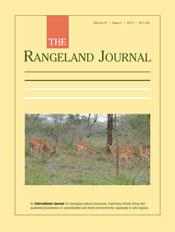RJ15015Climate change and adaptive capacity in the Western Australian rangelands: a review of current institutional responses
This study evaluated support for adaptive capacity in Western Australian rangelands. Eight indicators of adaptive capacity were used to evaluate publicly available documents. Progress towards adaptive capacity was classified as ‘aspirational’, ‘in action’ or ‘assessed’. Institutional support for adaptive capacity was evident. However, questions, such as whether the largely aspirational nature of documents reflect actual adaptation, and the extent to which stakeholders perceive that institutional support exists remain unanswered.




